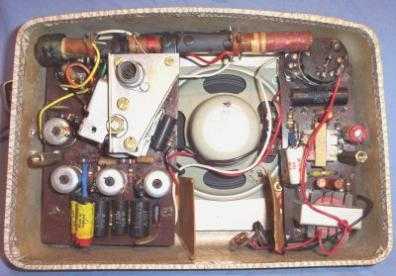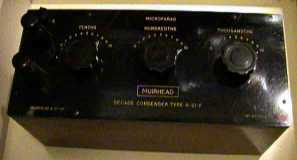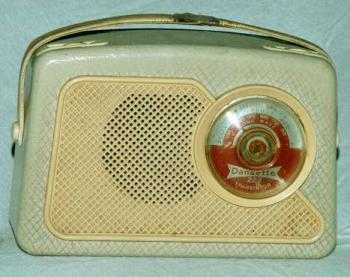TECHNICAL BEGINNINGS
From an early age, I was always interested in things electrical. My first experience that I can remember
was when I was about 6 years old and decided to find out why things worked when you plugged them into the
sockets on the wall! I can recall sticking two fingers into one of those old UK round 2 pin mains sockets.
The effect was memorable to say the least with a violent pain running up my arm. Luckily for me my other
arm wasn't making contact with earth. I certainly discovered something that day? You don't go around
putting your fingers in 240VAC mains sockets! Electric shocks I received in later years you can be rest
assured were NOT of my own making.
Playing with batteries, switches, torch bulbs and bits of wire was much safer. For years as a youngster
I had this block of wood on which I would wire up buzzers and torch bulbs to switches connected to a 4.5V
battery. Occasionally, I would wire up a circuit to control the 4V DC electric motor for my Meccano models.
With the help of my father, I even managed to wire up a D.P.D.T. switch to reverse the motor's direction.
Hey, what an achievement!
It must have been about 1958 when I discovered my first electronic circuit diagram. I remember being
given some old hobbyist magazines. Although these were aimed at the mechanical model maker; building your
own miniature steam locomotive or whatever, in one there was a circuit diagram of a simple radio receiver.
What were these strange symbols? Wiggly and curled lines; lines with gaps in or connected to each other
with little dots and all these connected to these strange looking round shapes? I studied this drawing for
hours then the coin dropped. I realised that these symbols represented components that one could obtain and
following this weird looking diagram, you could build a radio receiver. I looked up in my encyclopaedia to
find out more and what these symbols represented.
At that time I was living in Camberwell, S.E. London. There were still many bomb sites near my home; gaps
in the streets where once houses had stood. These were great places to play in and explore, but also a
repository of disused junk such as old radio sets. These I would take home and strip down for components,
studying the colour codes on the resistors to determine their values, removing the valves that were still in
one piece and occasionally smashing the glass envelope on some to find out how they were constructed. I never
did get around to building the radio circuit I found in the magazine. As it used mains power, I guess my
parents must have forbidden me to do this, but I was determined to build a radio.
In 1959 we moved to East Dulwich (SE London) and for Christmas my father gave me a pocket transistor radio
kit. It came complete with PC board, components and a plastic case. Up until this point, I had never made a
soldered connection. My father, who's profession was a gas fitter had in his tool bag a copper bit soldering
iron which was heated in a gas flame. With advice from my next door neighbour who I guess must have worked
in electronics, I started to assemble the radio with his and my father's help. As you will have probably
guessed, it did NOT work. Hardly surprising using a monster iron to solder miniature components. I was very
upset by this and recall almost being in tears. After my bad experience in trying to solder delicate
electronics components with a plumber's soldering iron, I purchased an ADCO electric soldering iron and some
small hand tools; pliers, wire cutters, etc. Some of which I still use today.

Shortly after this, my father gave me an assembled PC board for a Dansette portable radio. These were very
popular in the early 1960's. I connected a PP9 battery and low and behold... It WORKED! I quickly built a
frame for this 'skeleton radio' out of Meccano and for perhaps a year had it sitting on my bedside table
listening to Radio Luxembourg when I should have been asleep. Pop music had finally caught up with me! This
was to drive me further into the field of electronics a couple of years later.
Sometime later, my father arrived home with a new genuine case for the Dansette radio. I removed the PC
board from the Meccano frame and mounted it inside. I now had the real thing. It was some years later before
I put two and two together and guessed how this was acquired? At that time, a friend of the family worked for
Ever Ready at Dagenham, Essex. The radio chassis probably 'fell off' the production line and at a later date,
the case for said radio followed in it's footsteps!
In 1963 I had taken up a new hobby; learning to play the guitar. In the beginning for an amplifier I used
the family Murphy A170 radio. More info about my early experiments with musical instrument amplification and
the kits I later built can be found in my UK Music Pages
It was through this desire to get a better (and louder) sound from my electric guitar which finally pushed
me into electronics home construction and ultimately into a career in electronics and later, an interest in
amateur radio. Whereas most budding radio amateurs would have probably got their introduction to the hobby by
tuning across the short wave bands on the family wireless and picking up conversations, this didn't happen
with me. I did occasionally listen to the short wave bands, but never heard a thing. For me, the radio made
a reasonable guitar amplifier and that was that. Several more years were to pass before I discovered amateur
radio.
I START A FIVE YEAR APPRENTICESHIP IN ELECTRONICS
In July 1964, I left school and in September started a 5 year apprenticeship at MUIRHEAD & CO LTD
in Elmers End, Beckenham, Kent. In my last months at school, I was still unsure what career line to follow.
Being heavily influenced by pop music, I wanted to be part of the business. I remember applying to recording
companies like HMV, Decca and a few others, but none of my applications were successful. From what I recall,
a job recruitment person came to the school and was then when I found out about apprenticeships at Muirhead.
For a short time I thought about signing up for the Royal Navy, but my mother spoke me out of that saying
that I could never handle the discipline. She was certainly right there as in later years I was to rebel
against my peers.

Muirhead was a 'fun' place to work; an electronics paradise. They built big fax machines for the newspaper
industry and meteorology office and precision test equipment such as low frequency oscillators, wave analysers,
phasemeters, Wheatstone bridges and electrical standards. The decade condenser (capacitor) box as shown in
the image below was the first job I worked on as an apprentice; soldering the wires between the switch contacts
and the precision capacitors. Muirhead also made servo systems and rotary control devices like synchros and
magslips. The company still exists making these rotary products (see their
HISTORY page), but their huge factory in
Elmers End where I worked was pulled down in the 1980's and the site turned into a hypermarket. I may at a
later date devote some web space to my apprentice years at Muirhead. Some really comical stories to tell which
I ought to record for posterity!

I soon found that a trip to the stores was something of a challenge? Yeah, I was sent down with stores
requisitions for 'A Long Weight', a 'Left Handed Screwdriver' and all the usual old crap that gets pushed on
apprentices by their peers! However, I soon discovered that one could fiddle the system and work on the
occasional 'foreigner' (sometimes called a 'homer') during lunchtimes. The amount of unofficial work that went
on in that place was incredible! A trip to the paint shop was an eye opener with the occasional motor bike
fuel tank or bicycle frame winding their way along the overhead conveyor chain intermingled with bonafide jobs!
You could a get an electronics chassis knocked up in the press shop, get it hammer finish spray painted and
even front panels painted and engraved if you knew the right people!
It is an interesting fact that when I joined the company in 1964, virtually all equipment was built using
valves (tubes). When I left in 1970, nearly all the equipment had changed to transistor technology and even
equipment using integrated circuits (7400 TTL series) had just started to make an appearance. Such was the
revolutionary era in electronics that I lived through.
During this time, I made many 'foreigners' such as an oscilloscope and a solid state stereo amplifier to
fit into my record player. For my guitar, I built a tape loop echo unit and an effects box. In later years I
built amateur radio gear including my 2 metre AM transmitter and valve and transistor 2 metre converters.
MY INTRODUCTION TO AMATEUR RADIO
The year is 1968, I'm four years into my apprenticeship and now working in the Service Department of
Muirhead. This was located on Elmers End Green opposite to what was once the cinema. Working here was great
fun as it gave me the opportunity to go out with experienced engineers and do installation work. A trip to
the National Gas Turbine Establishment at Pyestock to install a wave analyser being the most memorable. It
also gave me a chance to drive the company vehicles such as Mini vans and occasionally Vauxhall Victor
estates which I would take to a garage in Croydon to get serviced. It was really cool driving around in the
works time in new vehicles!
Most of the staff in the Service Department were weird. However one of the trainee engineers; Bill
Curtis, I got on extremely well with. He was always willing to give me advice whilst most of the others
preferred to keep knowledge to themselves or spend their time 'creeping up the arse' of the Service Manager!
One lunchtime Bill was working on what was obviously a foreigner. A small tin box with a few valves sitting
on top and a small rectangular plug-in component which I didn't recognise at that time (a crystal) with lots
of coils in compartments below. I remember saying to Bill somewhat cynically, "What's that heap of junk you're
working on?", to which he replied, "A 2 metre converter." I then proceeded to ask him what it was for. He
explained it was used to allow signals from the 2 metre VHF radio amateur band to be detected on an HF radio
receiver.
This was the first time I had met a radio amateur face to face. Although I knew that such people existed,
I always had the impression that these were loner types, sitting in dark corners of their houses through all
hours of the night playing multiple chess games with like minded people around the world. The Tony Hancock
UK TV comedy series featuring "The Radio Ham" in one of the episodes probably exasperated this idea. Bill on
the other hand was far from this image. He was genuinely enthusiastic about his hobby. I was curious and wanted
to know more. Bill invited me to come over to his 'shack' one evening so he could show me his station and
demonstrate amateur radio in action.

Bill lived in Farnborough, Kent. His parents house was set back from the A21, but there was no mistaking it
when I arrived there. In full view from the main road was his aerial mast. Perched on top were his antennas
which he told me were 2 metre and 70cms band 8 over 8 slot feed arrays. They could be rotated in any direction
to obtain the best signal strength. His shack really was a SHACK; out in the garden and inside was a plethora
of gear. The main item which took up most of his bench was an AR88LF receiver. This was his pride and joy and
acquired from a local amateur. There were numerous other pieces of kit, all home made such as an SWR meter and
open chassis transmitters. He then explained how it all fitted together and then proceeded to put out a general
call...
"CQ CQ... This is G8BGR in Farnborough, Kent and will be tuning low to high for a call."
I can't remember if he got a reply that night, but to say that I wasn't impressed would be an understatement.
I was hooked. Bill then went on to explain what was necessary to become a radio amateur. I would need to study
and sit an exam called the RAE. This would enable me to get a Class B license and operate on the 2 metre (144MHz)
band and higher frequencies. When Bill first got his license (probably in 1967), the lowest band available for a
Class B licensee was the 70cms (432MHz) band, but shortly afterwards, the 2 metre band was released for Class B
operators.
Bill was a seasoned Class B operator. He had no interest whatsoever in operating the HF bands which required
a 12 words per minute morse code certificate at the time in order to obtain a Class A license. I recall one day
whilst in Bill's shack, he was tuning across the 2 metre band and came across a morse signal. Without thinking I
said, "What's he sending?". Bill said laughing, "How the **** should I know!" Bill then went on to say that the
only use he would put a morse key to was as a door knocker for his shack! I guess this coloured my outlook
towards HF and I too was content just to get a Class B license. In retrospect, this was a pity because if I had
studied Morse back then, I could have obtained a G3Y-- callsign. Thirteen years would pass before I would
upgrade to a Class A license.
See my page G8's reunite after 35 years! where I finally meet
up with Bill G8BGR again after a recent trip back to the UK.









